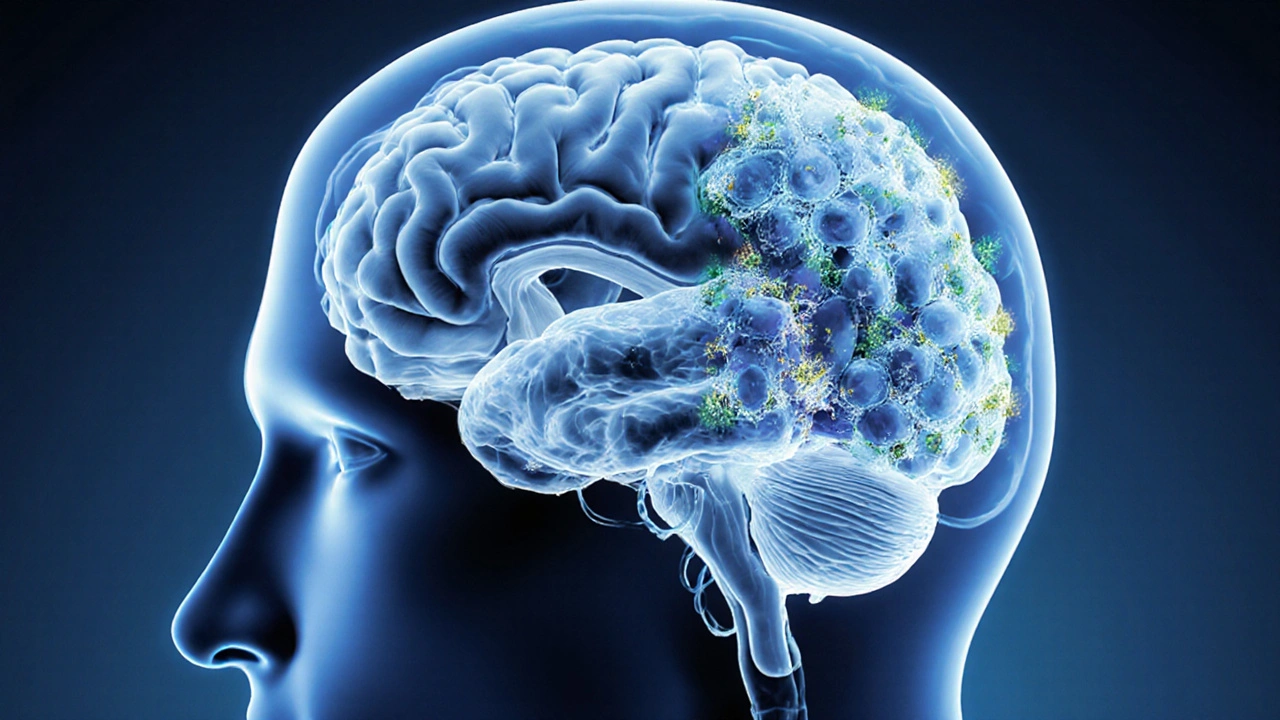
Hyponatremia Symptom Checker
Potential Cognitive Effects
Understanding the Connection
Low sodium levels affect brain cell function by disrupting the balance of fluids inside and outside brain cells. This can lead to swelling or shrinking of brain cells, which impacts:
- Attention and concentration
- Memory formation and recall
- Reaction time and decision-making
- Mood and behavior changes
When the sodium level in your blood drops below normal, it’s not just a lab number-it can literally fog your mind. hyponatremia can turn a clear‑headed adult into someone who forgets names, misplaces objects, or even experiences seizures. This article breaks down why low sodium messes with the brain, what symptoms to watch for, and how to reverse the damage before it becomes permanent.
Key Takeaways
- Serum sodium below 135mmol/L can impair attention, memory, and reaction time.
- Rapid drops (<120mmol/L) increase risk of seizures and irreversible brain injury.
- Identifying the cause-medications, heart failure, SIADH-is essential for targeted treatment.
- Correcting sodium too quickly can cause osmotic demyelination; follow a 4‑6mmol/L per day guideline.
- Fluid restriction, hypertonic saline, and addressing underlying conditions protect cognition.
What Is Hyponatremia?
Hyponatremia is an electrolyte disorder where the serum sodium concentration falls below 135mmol/L. Sodium (Na⁺) is the main cation in extracellular fluid, crucial for maintaining electrical gradients across cell membranes. When sodium drops, water moves into cells to equalize osmotic pressure, causing them to swell-especially vulnerable brain cells.
How Sodium Regulates Brain Volume
Brain tissue is encased in the rigid skull, so even small shifts in cell size can raise intracranial pressure. Low sodium reduces plasma osmolality, prompting water to shift into neurons and glial cells. This intracellular edema stretches the blood‑brain barrier and hampers neurotransmitter balance, leading to slowed signal transmission.

Understanding Cognitive Function
Cognitive function encompasses attention, memory, executive planning, and language processing. These processes rely on precise ion gradients for action potentials. When sodium‑dependent gradients falter, the brain’s “wiring” becomes sluggish, manifesting as confusion, memory lapses, or reduced concentration.
Typical Cognitive Symptoms of Hyponatremia
Symptoms don’t appear overnight; they progress with worsening sodium levels:
- 135‑130mmol/L: Mild headache, subtle forgetfulness, slight difficulty focusing.
- 129‑125mmol/L: Noticeable confusion, disorientation, trouble forming new memories.
- 124‑120mmol/L: Marked agitation, inability to follow simple commands, slurred speech.
- Below 120mmol/L: Seizures, coma, and risk of permanent neuronal injury.
Even when a patient feels “fine,” neuropsychological testing can uncover deficits in reaction time and working memory, indicating subclinical impact.
Key Players Behind the Sodium Dip
Several mechanisms drive hyponatremia, each with distinct treatment paths:
- SIADH (Syndrome of Inappropriate Antidiuretic Hormone Secretion) forces kidneys to retain water, diluting sodium.
- Use of Diuretics, especially thiazides, increase urinary sodium loss.
- Heart failure or cirrhosis causes fluid overload, again lowering serum sodium.
- Excessive water intake-sometimes seen in marathon runners or psychogenic polydipsia-can outpace renal excretion.
Identifying the cause is essential because treating the underlying condition (e.g., stopping a diuretic, managing heart failure) often resolves the electrolyte imbalance faster than sodium replacement alone.

Diagnosing the Imbalance
| Serum Sodium (mmol/L) | Typical Cognitive Impact | Clinical Action |
|---|---|---|
| 135‑130 | Minor attention lapses | Observe, assess fluids |
| 129‑125 | Confusion, short‑term memory loss | Review meds, consider fluid restriction |
| 124‑120 | Severe disorientation, speech difficulty | Urgent labs, possible hypertonic saline |
| <120 | Seizures, coma | ICU care, controlled correction |
Lab work should include serum sodium, serum osmolality (Serum Osmolality), urine sodium, and thyroid/adrenal function to rule out secondary causes. Neuroimaging is reserved for patients with focal neurological signs or suspected central lesions.
Managing Hyponatremia to Safeguard Cognition
Therapy balances two priorities: raise sodium enough to halt brain swelling, but avoid a rapid jump that can cause osmotic demyelination syndrome (ODS). Current guidelines suggest a correction rate of no more than 4‑6mmol/L in the first 24hours for chronic cases.
- Fluid Restriction: Limiting free water intake to 800‑1000mL/day is first‑line for SIADH and mild cases.
- Hypertonic Saline (3% NaCl): Reserved for severe symptoms (seizures, coma). Administered via controlled infusion pumps, often 100mL bolus repeated until sodium rises 4‑6mmol/L.
- Vaptans: Oral vasopressin receptor antagonists (e.g., tolvaptan) promote free water excretion without sodium loss-useful in chronic SIADH.
- Address Underlying Disease: Adjust diuretics, treat heart failure with ACE inhibitors, manage adrenal insufficiency with corticosteroids.
Throughout treatment, repeat sodium checks every 2‑4hours initially, then every 6‑12hours once stable. Cognitive re‑assessment should be performed after correction to gauge recovery.
Practical Tips for Patients and Caregivers
Even if you’re not a health professional, small daily habits can prevent a dangerous sodium dip:
- Track fluid intake if you’re on thiazide diuretics-aim for 1.5-2L/day unless otherwise directed.
- Watch for “headache‑plus‑nausea” combos; they often precede confusion.
- Never replace lost electrolytes with plain water after intense sweating; a sports drink with balanced sodium can help.
- If you notice sudden forgetfulness or difficulty concentrating, request a serum sodium test at your next GP visit.
- Family members should be aware that an older adult’s “slowness” could be hyponatremia rather than aging.
Early detection and proper correction usually lead to full cognitive recovery. Delays, however, risk permanent deficits.
Frequently Asked Questions
Can mild hyponatremia cause memory problems?
Yes. Even a serum sodium of 132‑134mmol/L can reduce short‑term memory and slow reaction time, especially in older adults. Routine labs can catch this early.
Why is rapid correction of low sodium dangerous?
A quick rise in serum sodium forces water out of brain cells too fast, leading to osmotic demyelination. This can cause permanent motor and speech deficits. The safe limit is 4‑6mmol/L per day.
What medications commonly trigger hyponatremia?
Thiazide diuretics, selective serotonin reuptake inhibitors (SSRIs), carbamazepine, and certain antipsychotics can impair the kidney’s ability to excrete water, diluting sodium.
Is fluid restriction enough for SIADH?
For mild SIADH, restricting free water to < 1L/day often normalizes sodium. More severe cases may need vaptans or hypertonic saline under hospital supervision.
Can dehydration cause hyponatremia?
Paradoxically, yes. When the body retains water to compensate for fluid loss, sodium becomes diluted, especially if water is consumed without electrolytes.

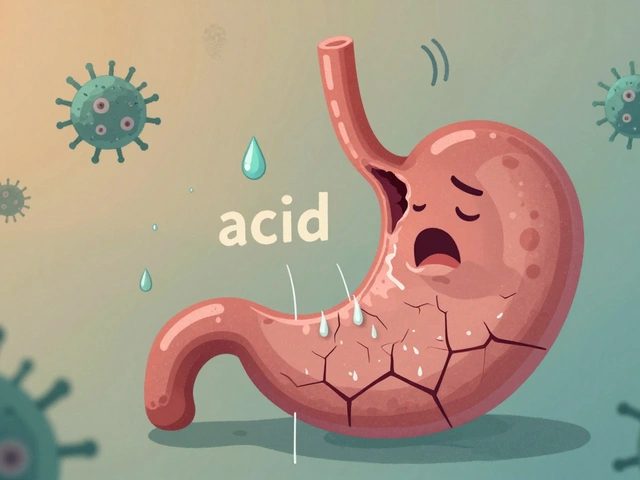

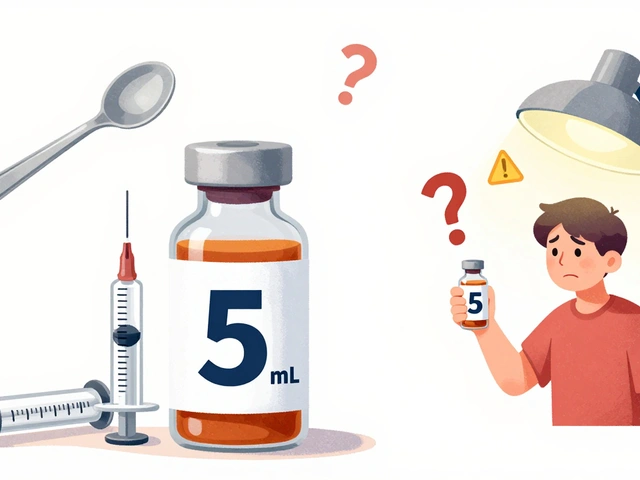
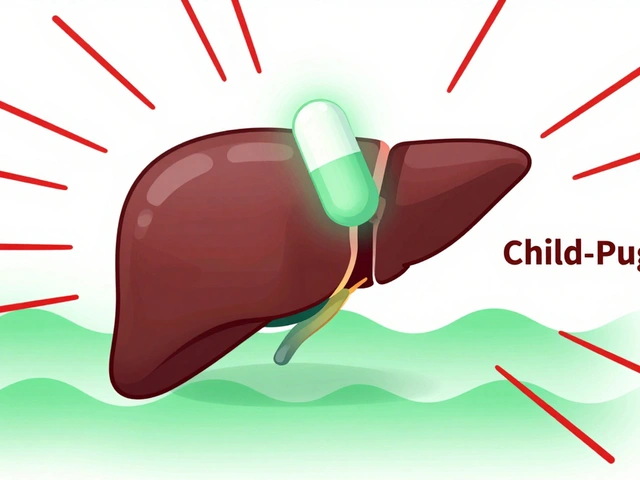
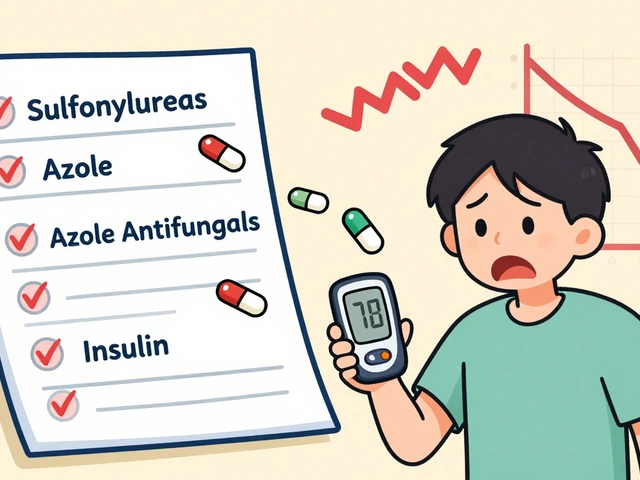
6 Comments
In the grand tapestry of medical research it is incumbent upon us to consider the possibility that pharmaceutical conglomerates have deliberately obfuscated the ramifications of hyponatremia. Their vested interests may well entail suppressing data that illustrates the subtle erosion of cognitive faculties in the general populace. When serum sodium falls beneath the normative threshold, neuronal osmotic equilibrium is disrupted, leading to an insidious decline in attention and memory. One must remain vigilant to the covert narratives that downplay these effects, lest we become unwitting subjects of a grand experiment. The very architecture of our brains is not immune to the machinations of those who control the flow of information.
I appreciate the clarity of the presentation
Consider, if you will, the dialectic between homeostasis and disruption; the brain as a crucible where sodium operates as a silent moderator. The epistemic shift from mere symptomatology to a nuanced understanding of fluid dynamics is profound. When electrolyte gradients falter, the synaptic orchestra loses its tempo, producing a cascade of mnemonic degradation. In layman's terms, think of your mind as a well‑tuned instrument suddenly out of tune due to a missing string. The philosophical implication is that even the most elementary chemical imbalance can precipitate an existential dissonance.
It is clear that hyponatremia can be quite distressing for patients and familiars alike. I feel a deep sense of empathy for those who experience such cognitive fog, especially when it may be misattributed to other causes. The medical community ought to provide thorough explanations and support, as many of us are still learning the full extent of the condition. The importance of clear communication cannot be overstated, because many patients feel lost and often wonder why they are feeling this way. Definately, we need more public awareness and better screening protocols.
Oh great another post about brain water balance as if we needed a refresher. Guess the medical textbooks weren’t enough, huh
Surely we’ll all start measuring our sodium with kitchen spoons now.
Let us be perfectly explicit: the diminution of serum sodium is not a benign statistical blip but a strategic vector of neurological sabotage. The very architecture of our cognitive domain is vulnerable to covert manipulation via electrolyte perturbation. This is not a mere coincidence that the populace remains largely uninformed about the insidious nature of hyponatremic episodes. One must acknowledge that the systematic suppression of comprehensive data serves a hidden agenda of control. The clinical manifestations-impaired attention, memory lapses, slowed reaction times-constitute a cascade that erodes decision‑making capacity in a manner conducive to external influence. Moreover, the rapidity of sodium decline determines the severity of cerebral edema, a fact that is conspicuously absent from mainstream discourse. The public health narrative deliberately omits the correlation between acute hyponatremia and mood dysregulation, thereby preserving the status quo. It is incumbent upon the discerning observer to interrogate the motivations behind such selective reporting. The medical establishment, bolstered by vested corporate interests, appears to perpetuate a veil of obfuscation. In practice, the failure to recognize early hyponatremic signs results in delayed intervention, which translates into irreversible cognitive compromise. This neglect is not accidental; it is engineered. The intersection of pharmacology, nutrition, and policy creates a triad that sustains this covert operation. Consequently, the average individual becomes a silent participant in their own cognitive decline, oblivious to the orchestrated nature of the phenomenon. To counteract this, an informed populace must demand transparency and rigorous peer‑reviewed dissemination of all findings related to electrolyte homeostasis. Only then can we dismantle the architecture of this insidious influence, restoring autonomy to the human mind. The path forward requires vigilance, education, and an uncompromising demand for truth.